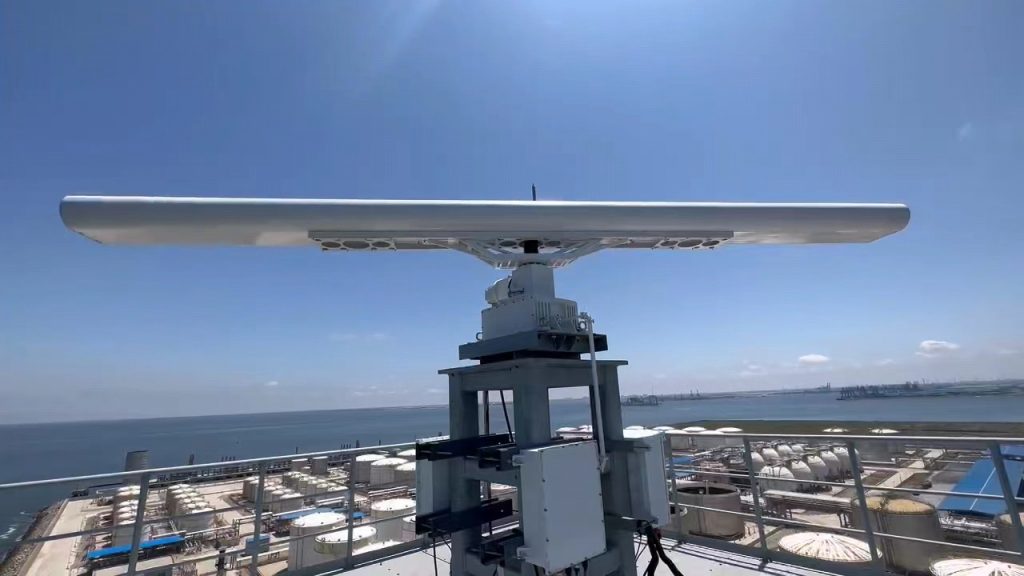Vessel Traffic Services (VTS) radar, a cornerstone of maritime surveillance, is undergoing rapid evolution to meet the demands of growing global trade, complex coastal traffic, and stricter safety regulations. This article outlines key trends shaping its future, focusing on technological innovation, integration, and adaptability.
1. Enhanced Detection Capabilities
1.1 Higher Resolution and Extended Range
Future VTS radar systems will prioritize ultra-high resolution to identify small targets—such as fishing boats and debris—in cluttered marine environments. Synthetic Aperture Radar (SAR) technology, optimized for maritime use, will play a pivotal role by leveraging relative motion between radar and targets to produce detailed imagery, overcoming limitations of traditional systems.
Advancements in antenna design and transmitter power will extend detection ranges. Large-aperture antennas and solid-state transmitters will boost sensitivity, enabling tracking of vessels at greater distances. Millimeter-wave radar, less susceptible to rain, fog, or sea spray, will gain traction for its ability to provide precise target dimensions and shape data, enhancing situational awareness.

1.2 Robust Anti-Interference Measures
Marine environments pose unique challenges: sea clutter, electromagnetic interference from ships, and weather-related disruptions. Next-gen VTS radar will integrate adaptive clutter cancellation algorithms that real-time adjust filtering to separate target signals from noise. Multi-frequency operation will mitigate single-band interference, ensuring continuous monitoring even when specific frequencies are compromised. These improvements will critical for maintaining reliability in busy ports and coastal zones.
2. Intelligent Target Classification
Accurate identification of vessel types—cargo ships, tankers, or leisure craft—will rely on advanced machine learning (ML) algorithms, complemented by statistical analysis. ML models will extract key features from radar echoes, including radar cross-section (RCS), Doppler shifts, and trajectory patterns, to classify targets with minimal human intervention.
Knowledge bases, built from historical vessel data, will enable rapid matching of new radar signatures to known profiles, reducing response times for VTS operators. This fusion of data-driven insights and automation will streamline traffic management, particularly in high-traffic areas like the English Channel or Singapore Strait.
3. System Integration and Networking
3.1 Synergy with Complementary Technologies
VTS radar will increasingly integrate with Automatic Identification Systems (AIS) to cross-verify targets. While AIS provides vessel identities and metadata, radar fills gaps by detecting non-cooperative targets (e.g., unregistered boats). This hybrid approach reduces false alarms and enhances target tracking accuracy.
Integration with CCTV systems will add visual validation, allowing operators to confirm radar detections with real-time video feeds. This combination is vital for incident response, such as verifying collisions or unauthorized vessel entry into restricted zones.
3.2 Global Networking
Regional VTS radar systems will form interconnected networks via satellite, 5G, and fiber optics, enabling seamless data sharing. For example, radar data from the North Sea can be instantly relayed to Scandinavian ports, facilitating coordinated responses to maritime emergencies or large-scale traffic congestion.
Networking will also support predictive analytics, where aggregated data on vessel routes and patterns helps forecast bottlenecks, optimizing port operations and reducing emissions from idle ships.
4. Miniaturization and Mobility
Miniaturization, driven by advancements in semiconductor technology, will enable compact radar units deployable on UAVs, buoys, and small patrol boats. These mobile platforms will extend coverage to remote or shallow waters, where traditional shore-based radar struggles to reach. UAV-mounted radar, for instance, can monitor coastal areas during storms or oil spills, providing critical data without risking human crews.
Portable radar systems will empower on-site teams during temporary events—such as maritime festivals or construction projects—offering flexible, short-term surveillance. This mobility ensures VTS adaptability to dynamic operational needs.
5. Sustainability Focus
Energy efficiency will become central to radar design. Solid-state transmitters, replacing energy-intensive vacuum-tube models, will reduce power consumption by up to 40% while extending operational lifespans. Intelligent power management systems will further optimize energy use, scaling output based on traffic density—lowering power during quiet periods without compromising detection.
Environmental impact will also be minimized through eco-friendly materials (e.g., lead-free components) and reduced electromagnetic radiation, ensuring compliance with marine conservation standards.
Conclusion
The evolution of VTS radar is defined by smarter technology, seamless integration, and greater adaptability. From high-resolution detection to global networking, these trends will enhance maritime safety, efficiency, and sustainability. As maritime traffic continues to grow, embracing these innovations will be key to navigating future challenges, ensuring secure and resilient global shipping networks.

